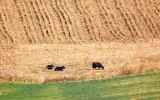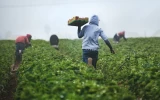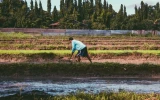The Best Place to Buy & Own a Small Farm (Look For This)
Whether you're looking for a place to grow crops or raise livestock, or just a peaceful place to call home, we've got you covered. Come explore the possibilities and find the perfect small farm for you.
The best place to buy and own a small farm is a rural area with good soil quality and access to water. Look for areas with a supportive agricultural community and access to resources like feed, veterinary care, and farm equipment. Consider the climate, soil fertility, and proximity to markets.
All these qualities offer the opportunity to build a secure future for your small farm. Let's get started looking for the best spot.
Summary
- Picking a good farm location involves considering factors such as climate, soil quality, access to water, local infrastructure, and proximity to markets.
- Research the local economy and regulations, and consider the cost of land and other potential expenses.
- By taking the time to evaluate the area, you can make wise and informed decisions when buying and owning a small farm.
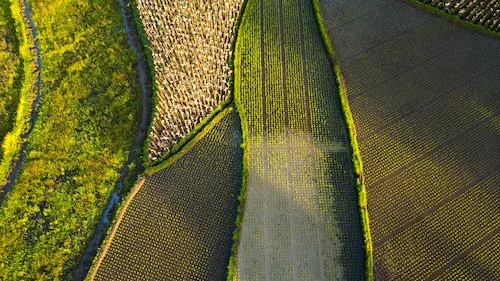
On this page:
Picking A Good Small Farm Location
Buying and owning a small farm is a great way to enjoy the countryside and a self-sustaining lifestyle. This list of fundamentals will help you pick the best location to buy and own a small farm. From land characteristics to zoning regulations, these tips will help you find the perfect spot for your new farm.
1. The best place for a farm has access to potential customers
The location of a farm has a direct impact on the number of customers it can attract. Farms that are located near large cities and towns have an advantage over farms located in more rural locations, as they are more likely to draw in customers. This is because customers in these areas are more likely to be interested in buying the products produced by the farm.
In addition, having access to these customers can help a farm better promote its products, increase sales, and overall create a more successful business. This could include utilizing online marketing campaigns and creating relationships with local stores and restaurants that could be interested in carrying the farm’s products.
2. Consider the land size and condition when looking for a farm
The land size and condition are two of the most important factors to consider when selecting a good location to buy and own a small farm. The size of the land will determine how much you can produce and how many animals you can keep.
If the land is too small, you may not be able to produce enough to make a profit or have enough animals to make a living. The condition of the land will also play a role in the amount of production that can be achieved. Poor soil quality, inadequate drainage, and a lack of water resources will all lead to reduced yields and increased costs.
It should be large enough to accommodate your desired crops, animals, and other operations. It should also be in good condition with adequate soil quality and drainage.
3. Look out for the zoning of the area of the farm
Make sure the area is zoned correctly for small farming operations. Zoning regulations determine what types of activities and land uses are allowed in a particular area. Depending on the zoning regulations of the area, certain land uses may be prohibited or restricted, such as livestock production, crop production, or even residential dwellings.
Therefore, small farmers need to ensure that the area is zoned correctly for their farming operations to prevent future conflicts and problems with local authorities. Furthermore, zoning regulations can limit the potential of a small farm since certain land uses may not be allowed in certain areas.
In addition, zoning regulations can also dictate the size of a small farm as well as the type of structures that can be built on the property. Knowing the zoning regulations in advance will help the small farmer properly plan and develop their farm in a manner that is compliant with local laws and regulations.
4. Observing the climate of an area for the potential crops to be planted on the farm
Choose a location with a climate that is suitable for the crops and animals you intend to raise. The climate of an area can determine what crops can be grown, the amount of rainfall the area receives, and the temperature range of the area. All of these factors can affect the success or failure of a small farm.
The climate of an area can also determine the types of livestock that can be kept on a small farm. It can also determine the types of pests and diseases that a small farm may be exposed to.
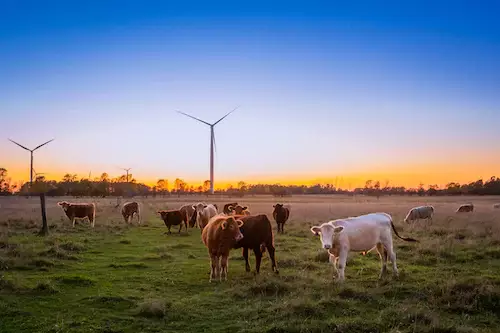
5. Look for the access for the basic infrastructure when looking for a farm
Investigate what infrastructure is in the area or available to the farm, such as roads, water sources, and electricity. Having access to roads, water sources, and electricity is essential for a successful farming operation.
- Roads provide access to markets, suppliers, and customers and are necessary for transporting livestock, crops, and farm machinery.
- Water sources are also essential for growing crops and providing for livestock. Without access to reliable, clean water, farming can be difficult.
- Electricity is essential for powering farm machinery and other equipment, as well as providing lighting and other necessities.
6. Check for the best price in picking a good location for a farm
Compare the cost of the land to similar properties to make sure you are getting a fair price. By understanding what similar properties are worth in the same area, you can make an informed decision on whether the price you are being offered is reasonable.
It is also important to compare land prices to similar properties in the same region, as this will give you a clearer indication of the going rate for similar properties in the area. Knowing what similar properties are worth will help you negotiate a better deal when it comes to buying the land.
7. Know the local regulations to be followed within the area of the farm
Check with the local government to make sure you are not breaking any laws or regulations. This is because laws and regulations vary from place to place and can impact the success or failure of your farm in many ways.
It is important to understand the local rules and regulations before committing to a property to ensure that you are legally allowed to operate a farm in the area. Additionally, local governments may provide resources and services to help farmers succeed, such as grants and subsidies, that could make a big difference in the profitability of your farm.

8. A farm should have community support within the area
A supportive local community is essential for any small farm owner, and should be a top priority when choosing a location for your small farm. Research the local community’s attitudes toward small farming and investigate any potential assistance or resources available to farmers.
- A supportive local community can provide valuable resources and assistance to help you make the most of your small farm.
- They can provide access to resources such as local farmers’ markets, agricultural education, and support for conservation and sustainability efforts.
- A supportive local community can also provide a sense of security and safety, as well as a sense of belonging and camaraderie with other local farmers.
- Furthermore, a supportive local community can help you find ways to market your farm products and tap into customers and potential customers.
- Finally, having access to a supportive local community can make it easier to find help and advice when needed, such as local agricultural services and advice on farming practices.
